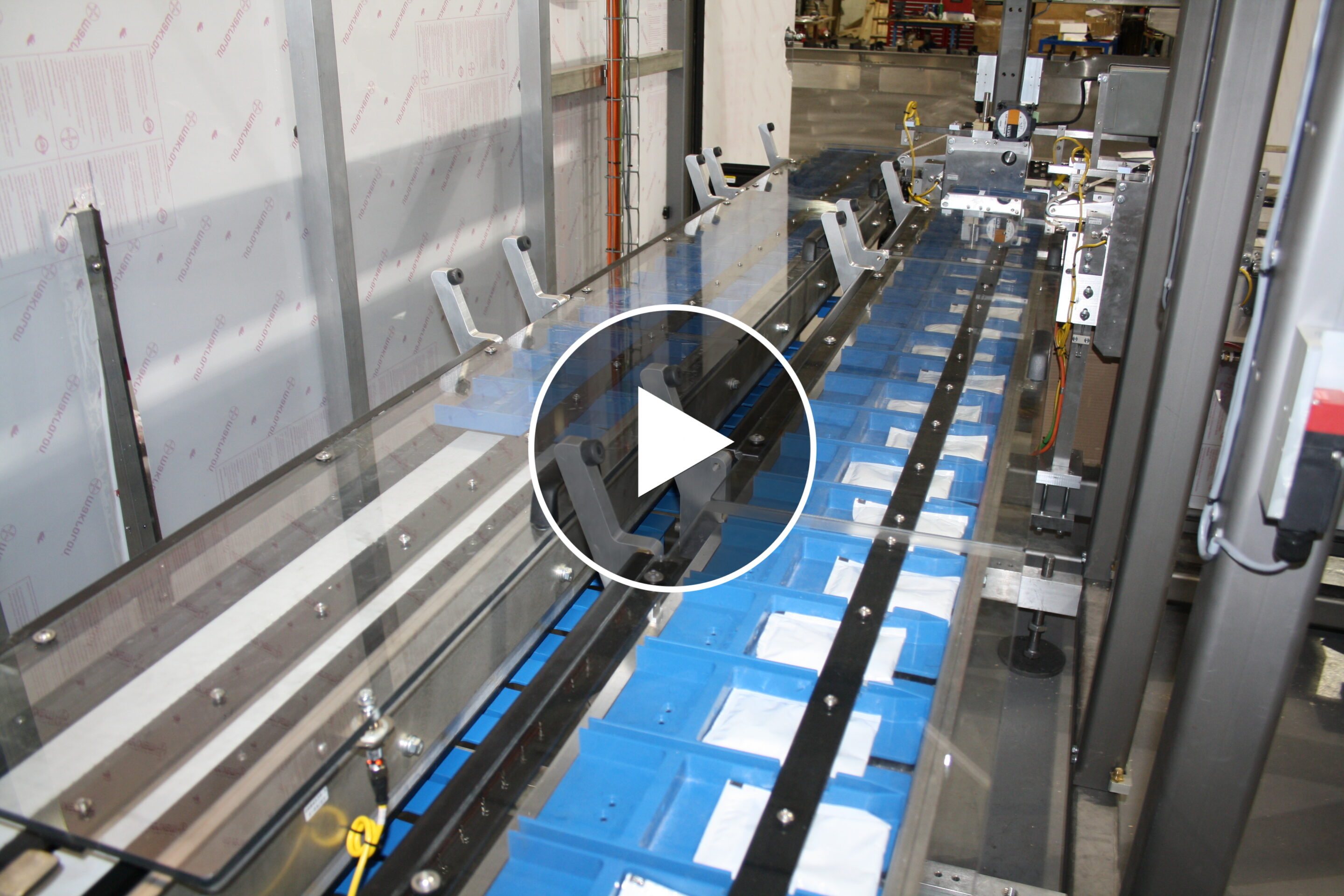How to Handle Multi-Pack Cartons on Horizontal / End Load Cartoners
Problem
Multi-pack cartons are usually difficult to run on end load/horizontal cartoners. Since the machine has to collate product, most of these applications require intermittent motion machine operation. Cycling mult-pack cartons intermittently can sometimes cause product to fall out of the carton. In addition, multi-pack cartons are typically run at speeds greater than 300 ppm. These speeds make it imperative to have a suitable infeed and closing system for the cartoner.
Solution
A linear servo-pac collation system, the sure-load carton closing system and Delta 3 or Gantry Robotic systems.
Solution In-Depth
Linear Servo-Pac Conveyor
A linear servo-pak is a collation system that utilizes two servo motors on two seperate belts. This concept allows one belt to handle collation at the infeed and the other belt to handle loading or picking the product out of servo-pac buckets. As the machine cycles, the belts will alternate functions. For example, one belt will accept incoming product from the upstream conveyor while the other will stage the product for loading or collation. This setup allows for a higher speed operation as opposed to a single belt product collation system. Servo-pac buckets mounted on the belts are used to accept product from upstream processes. The linear servo-pac can handle product laying flat or standing on edge. Infeed conveyors can be placed at right-angles or inline when connecting to the linear servo-pac.
Sure-Load Carton Closing
The sure-load carton closing system is a new innovation from AFA Systems. Multi-pack cartons on intermittent motion cartoners are susceptible to product falling out during machine indexing. The sure-load features an actuated closing system that does not require a rotary kicker on the loading side of the carton. This rotary kicker closes the trailing minor flap when the carton indexes out of the carton loading section. Instead, the trailing minor flap is sealed by a servo or pneumatic actuated closing system that includes a gap between the sealing plates to close the minor flap. This set up allows the carton to be completely contained before the bottom major flap is ploughed up before gluing.
Delta 3 or Gantry Robot
Collating product into the loading funnel is an important aspect when handling multi-pack cartons. When collating into loading funnels, a Delta 3 or Gantry robot will pick product out of a predetermined number of buckets and place into loading funnels. A servo or pneumatic actuated pusher will then end load the collated product into the carton. Delta 3 or Gantry Robots are very useful when running product speeds at over 250 ppm. Whereas speeds under 250 ppm can be better suited for collating the pack pattern directly in the servo-pac buckets. However, Delta 3 or Gantry Robots are best suited when projects require future flexibility. This is because new product counts and sizes can easily be added by developing new end effectors and adjusting the robot’s program.
Conclusion
Multi-pack cartons can be difficult applications for horizontal/end load cartoners. However, with the right solutions, handling multi-pack cartons can prove to be a highly-efficient operation for your line. This will lead to less product waste, higher-quality packaging, and improved customer satisfaction. Here are some tips when determining a solution for your multi-pack cartoning projects:
- Determine how many lanes will be coming to the cartoner. Also, ensure you know how the product is being conveyed to the cartoner. For example, short or long dimension leading.
- Identify the stackability of your product and whether it is suitable for an end load/horizontal cartoner. There are cases where multi-pack cartons are better suited for vertical cartoning. Examples of this are bottles or other rigid products
- Determine the maximum speed in terms of ppm (product per minute) you wish to run on the cartoner. Speed is the variable that highly influences machine design.
- Ensure that all sizes are predetermined before developing a solution. Wide size range of cartons/products can be run on multi-pack cartoners, however, this does increase the complexity of the system. Options like all-servo change-over can help reduce the complexity on multiple size applications.
Partners & Associations









